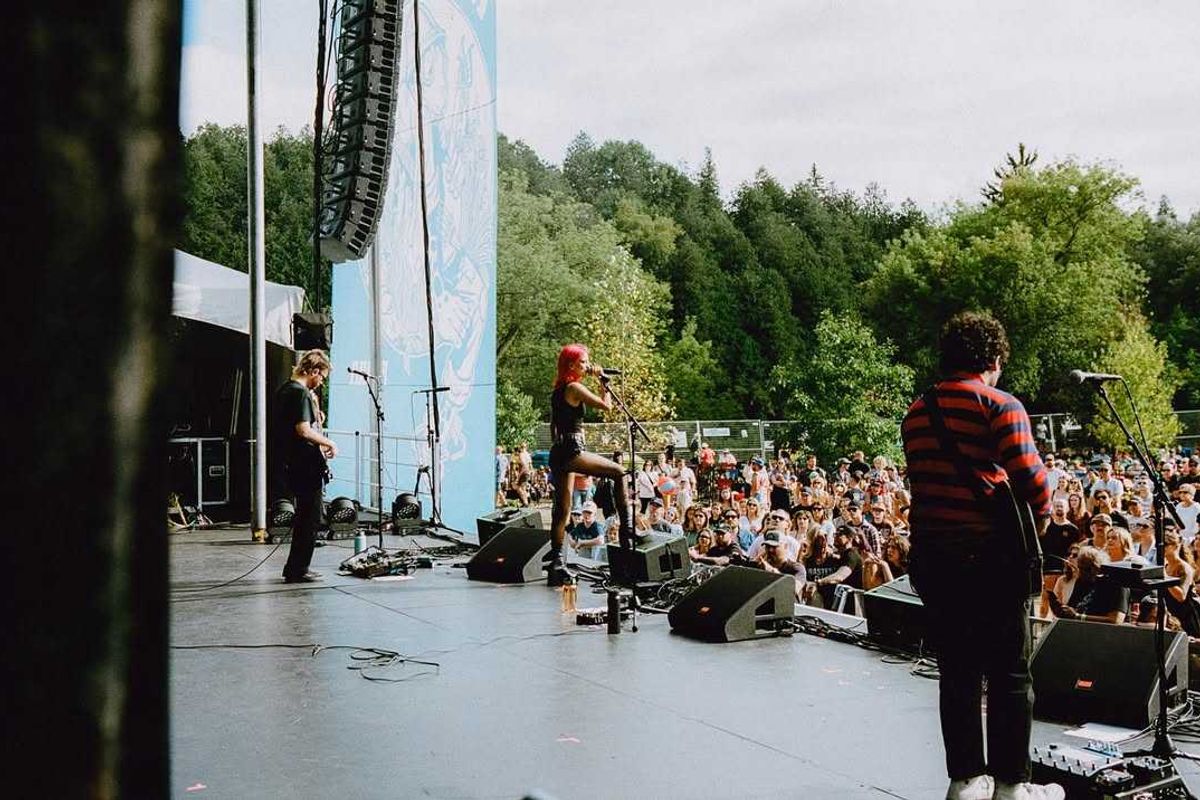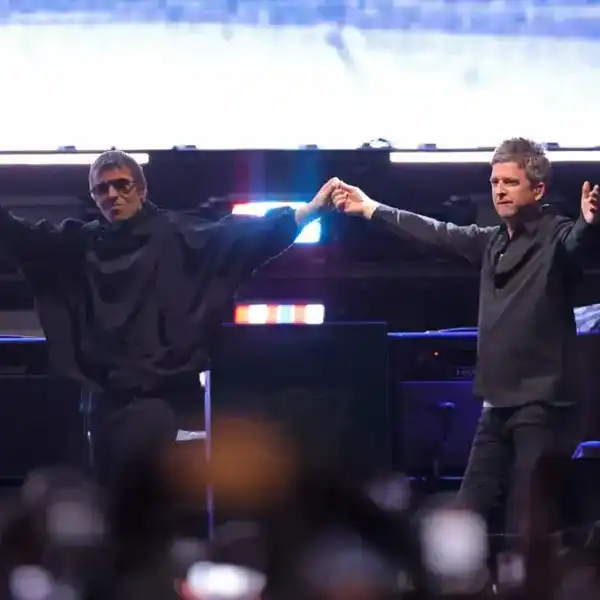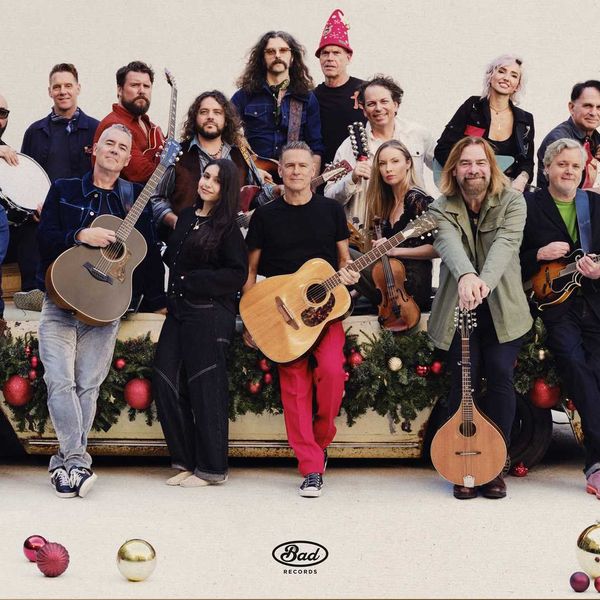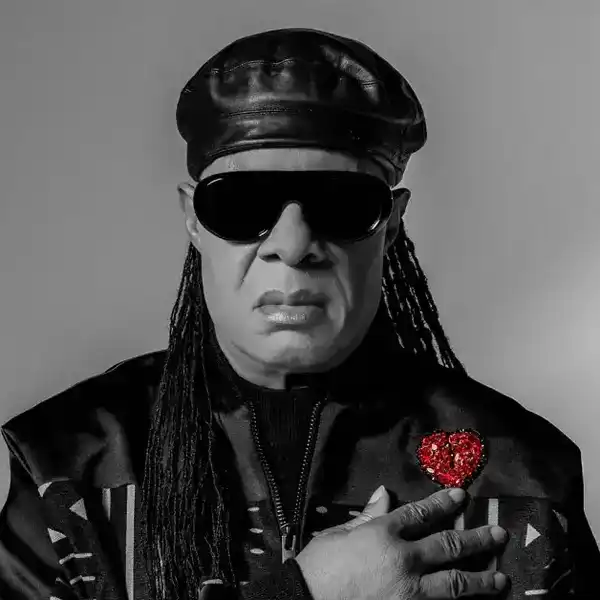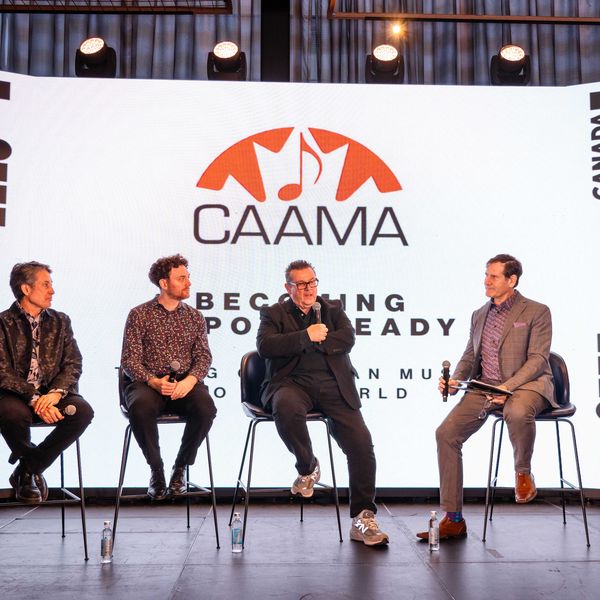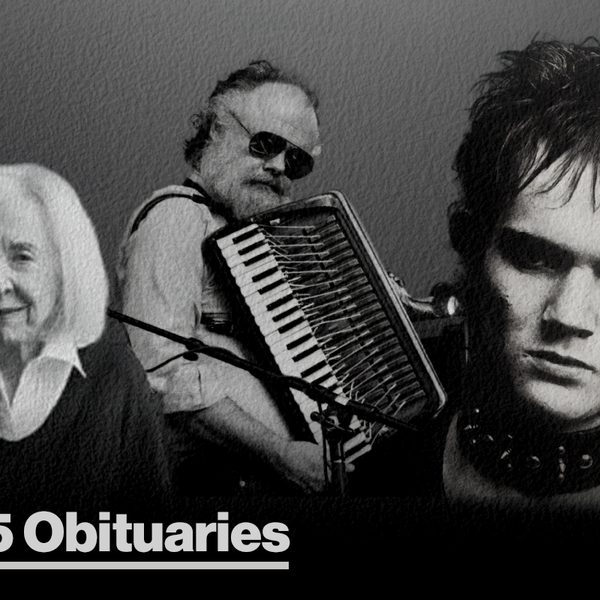Sonic Unyon's Supercrawl Continues To Rock The Hammer
The eleventh edition of the popular Hamilton street fest launches today. We interview founders Tim Potocic and Mark Milne (pictured) on the event and their other ventures that have had a considerable impact on the city they love.

By Kerry Doole
The eleventh edition of Hamilton's Supercrawl music and arts festival is primed for action this weekend, running from tonight (Sept. 13) through Sunday (Sept. 15) on different stages on James Street North, in the heart of downtown.
From humble beginnings, the event has evolved into a star-studded free fest recognised as one of the country's best. Major acts appearing this year include Stars, Bahamas, Bettye Lavette, Buffy Sainte-Marie, Dilly Dally, Rural Alberta Advantage, Ellevator, Twin Within, Jennifer Castle, Jack De Keyzer, Samantha Martin and Delta Sugar, Snotty Nose Rez Kids, and The Sorority.
Supercrawl was created by the folks at Sonic Unyon, the Hamilton-based company that now operates as a record label, artist management firm, live music promoter, club operator, and more.
To get the lowdown on Supercrawl and the state of the Unyon in general, we recently sat down with company heads Tim Potocic (Supercrawl's fest director) and Mark Milne. The interview locale was a craft brewery (Merit) situated on James Street, a stone's throw away from Sonic Unyon HQ, in a building owned by the SU team.
Potocic and Milne explained that this year's Supercrawl is back on track after an earlier major scare on the funding front. Back in late May, the provincial Ontario government announced that the grant for the event would be cut from $275,000 to zero, clawing away almost 20 percent of the festival's budget, one Potocic estimates at $1.6 million.
Last month, after some lobbying, the Ministry of Tourism, Cultureupstairsand Sport had a change of heart, coming up with $250,000 from its Celebrate Ontario fund for Supercrawl.
"We were freaking out when we got turned down," admits Potocic. "That was the biggest grant of all the funding we receive and a critical part of our funding model. To get the news late in the season, it was like 'fuck we're screwed!'"
Milne adds that "the others didn't tell me at first, as I was having my 50th birthday party then. When I heard, I felt sick."
Though relieved at the reinstatement of funding, Potocic cautions that "the future is in question, as we have to see where that fund lands and how the government wants to position it."
He recalls that "Supercrawl started as an experiment to see if something could work. We felt the need for it. There was a small urban fest down here for a few years that never really caught on, and it vanished for a couple of years. We felt there was a good groundswell down in this area. It was before a lot of the redevelopment, but there were little pockets of it, with studios, artists, musicians, and cool people. Over ten years, we went from seeing no-one down here to seeing like-minded people. With things starting to percolate downtown, it seemed we were on the right street, and it was the right time and place to try something."
Milne recalls, "there was a lot of resistance early on, not from people who lived and worked down here. Everyone sees the value in it now."
After beginning out of Sonic Unyon, Supercrawl was reconfigured as a non-profit in 2012. Potocic explains that "Sonic Unyon has a contract to run the fest but becoming a non-profit meant we could apply for federal and provincial money, and the municipality was able to grant us more money."
"It has evolved a lot to now, from the first-year budget of $30K to $1.6M now. It's not just a street fest on the weekend, as we now run shows all year long. We are working with different genres, and we are diverse too, featuring art, fashion, theatre, dance, and more. The diversity of what we do does speak to the Hamilton community, and that's a key to our success."
The 10th anniversary of Supercrawl was marked with an extra day of festivities, but the three-day format returns this year.
Sonic Unyon marked another milestone anniversary last year, that of 25 years as an independent record label, though it chose to celebrate that significant feat this year. A film documentary look at the label, Sonic Unyon: Now We Are 25, was screened at Mills Hardware in Hamilton back in April, and, in honour of Record Store Day, a limited edition pressing (500) of the label retrospective, Now We Are 25, was released as a triple vinyl pack.
The compilation spans every era of the label’s history and includes tracks from Basement Revolver, Frank Black and the Catholics, Danko Jones, The Dinner Is Ruined Band, Eric's Trip, Hayden, Kittens, Terra Lightfoot, Mayor McCA, The New Grand, Oh Susanna, Raising The Fawn, Shallow North Dakota, SIANspheric, Simply Saucer, Smoother, Strongman, Tangiers, Thrush Hermit, Treble Charger, Tricky Woo, Tristan Psionic, Young Rival, and more. That formidable list features many of Canada's top independent artists of the last quarter-century.
Sonic Unyon Records was formed by Mark Milne and Sandy McIntosh, both members of local band Tristan Psionic. Tim Potocic joined the band as its drummer and shortly after became a business partner. McIntosh later left to become an architect, but Milne and Potocic have stayed together at the helm, skilfully navigating Sonic Unyon through turbulent industry waters.
As the label gained traction on the Canadian scene through the '90s, the majors did come sniffing. "We met with everybody once, though we laughed at some of the meetings," Milne recalls. "There were a few things we passed on, but I'm glad we did. They would have taken us to Toronto, but we never wanted to leave. If we'd moved to Toronto back when everybody asked us why we weren't there, we wouldn't be doing this anymore."
Potocic notes that "we did go down some of those paths with the majors. We worked with Deane Cameron and EMI on some things. They did our manufacturing, and though they never distributed us, there was a relationship there. We started a label together at one point that we ended up selling back to EMI." As a label, Sonic Unyon now has a partnership with Universal Music Canada.
A significant step in the evolution of Sonic Unyon was the establishment of Sonic Unyon Distribution to distribute Sonic Unyon and other labels. That included such notable domestic imprints as Alien 8, BattleAxe, Constellation, Noise Factory, and Sappy Records, as well as exclusive representation of over 200 international independent labels in Canada, including Amphetamine Reptile, Darla, Dischord, Epitaph, Fat Wreck Chords, Jagjaguwar, Matador, Merge, Metalheadz, Nuclear Blast, Secretly Canadian, Southern, Thrill Jockey, and Warp.
That company lasted a decade and was then sold to MapleCore in 2008. "We were still growing then, and when we sold it that was our best year of business," says Potocic. "The obstacle for us was that we were always undercapitalized, so that was always very challenging for us personally, dealing with the ebbs and flows of the cash situation.
Milne reflects that "the bigger we got the worse it got. Yes, we are selling more records, but you are getting paid for it later. When CD Plus and Sam The Record Man went out of business, we felt that. We were responsible for a lot of people who relied on us for their rents or mortgages."
Sonic Unyon, the label, has persevered, though it now has a smaller roster than in earlier days. It currently comprises Terra Lightfoot, Basement Revolver, Sam Weber, SIANanspheric, Slowcoaches, WTCHS, and Kestrels.
The current approach is for Sonic Unyon to manage all the acts on the roster, Potocic explains. "We're at a point where we pretty much have to manage the artist to release its records. That does limit us. We couldn't put out 10 or 12 albums a year the way we used to because we couldn't handle managing that many artists. We like the hands-on approach with the people we work with."
Another Sonic Unyon operation is the running of Mills Hardware, one of Hamilton's most important live music clubs. It started up five years ago. and Potocic explains, "It is a multi-use venue, not just for music," Potocic explains. "It is used for private events, meetings, book launches, architecture talks, etc., and has a community vibe about it. The city needed a venue like that.
"We tried to make it a venue we'd like to see when we showed up to play a show. It has a nice sound system, friendly, helpful staff, you get a rider, you get paid, its clean, loading at the front, no stairs. Those things add up when you're on the road. We know what it's like to show up when it's minus 20, there's no-one there to meet you, you load up stairs, it's filthy, they don't pay you, and there's no food! We try to do a good job across the board."
Potocic adds that "we know it is difficult to run a venue, with rents going up everywhere, but we managed to negotiate with The City of Hamilton [they own the building] to provide a good environment for people to play."
"The advantage of having our own room is the ability to nurture some local talent and cycle people through. A band can have a show there, then we bring them back to play Supercrawl, and they build an audience in Hamilton. We can use it as an incubator for artists, and when they get bigger and come back we can rent a bigger venue. It is about being a proper promoter in town and means we have the opportunity to build an artist."
As examples of that process, he cites such up and coming locals as Ellis, Ellevator, and Red Hill Valleys.
The Sonic Unyon team also promotes concerts at other venues. "We did a big show at a church for Bahamas this year, and now he's back for Supercrawl," says Potocic. "Next time we can maybe rent Hamilton Place and sell 2,000 tickets, 'cos we built a relationship."
Co-operative ventures with Toronto promoter Collective Concerts have also paid off, says Milne. "We have done a few shows with them, like an outdoors Caribou concert, Jeff Tweedy, and, this summer, a festival headlined by The National and Alvvays."
Sonic Unyon worked with the Hamilton Tiger-Cats to present a Billy Talent show at the CFL club's stadium, and that partnership will be renewed for the music side of Grey Cup 2021 in Hamilton.
Along with these multi-faceted music-based ventures, Potocic and Milne have been very active in real estate in Hamilton, buying and restoring a large number of buildings, all in the downtown James Street area that has long been home to Sonic Unyon.
When they set up shop there in the '90s, the district had fallen on very depressed times, with many historic buildings left vacant to deteriorate. This enabled the pair to get into the market with just limited capital, and very smart investment has seen that side of their business thrive, especially as the much-maligned and gritty city has now become increasingly popular amongst those finding Toronto life becoming unaffordable.
"Our buildings are now all full, with no vacancies right now," says Potocic." It is not like we have got a million square feet of inventory to deal with, but we have our fair share, and I think we manage it pretty well. We have friends in town who help as needed. Part of my motivation on this block of buildings we own right here was that we've been looking at this f-** shithole block for so many years!"
"It was rotting, falling down, and somebody had to something," says Milne. "All the upper units were vacant and had been since the '40s or '50s. It seemed a waste of usable space for living and working, and we decided we wanted to fix it. These buildings look a lot better than they used to."
Potocic stresses that "you can never really go wrong owning land and property. This is our long-term retirement plan!"
Given that the usual trend of downtown urban rejuvenation results in musician and artistic types being squeezed out as they cannot afford space there, it's an intriguing twist that, in Hamilton, the downtown renaissance has been led at least in part by two music-based entrepreneurs.
The pair's love of Hamilton is deep-rooted so that they can take justified pride in 'The Hammer's current upturn. "It's just nice to put your money where your mouth is," says Potocic. "That is something we've always done, and we're still here, waving the Hamilton flag, across the country and further. Others here do that too, like Arkells, and Tom Wilson, from before we were doing it. Always being proud of where you're from is really important.
"Hamilton is cool. It is not just us, but a lot of people are doing incredible stuff here. It is a big small city and a very tight community. For the first time in my lifetime here, Torontonians want to come here!"
See the Supercrawl schedule here

